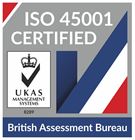5 Smart Building Trends You Can Implement Now
Is 2020 the year office buildings finally get smart?
It could be. The technology that enables intelligent, well-informed buildings is more prevalent than ever before thanks to its increased reliability and usefulness; smart building technology is also more cost-effective than it has been in the past.
Whereas it used to take an experienced office building manager years to understand and fine-tune building performance, the Internet of Things (IoT) makes it possible to gain immediate operational insights that can be used to quickly improve the bottom line. And while most office buildings aren’t likely to live up to these standards anytime soon, a whole host of "smart" strategies are now available with the technology readily accessible for just about any building to put into play.
Below are five trends that are gaining traction among office building owners and managers; you can expect to see these tactics being implemented with greater frequency in the years ahead.
1. Real-time Energy Monitoring
There’s no longer any need to guess or estimate how and when your building consumes energy; IoT smart sensors make it possible to know exact usage amounts definitively. Measuring the power consumption of your building assets can help you understand the energy footprint of your building overall; it can also help determine where energy is being wasted.
Real-time monitoring can also reduce your energy costs through early identification of equipment faults and inefficiencies. Sensors attached to key operating equipment, such as motors, pumps and fans, can measure things like vibration, power usage, temperature, humidity and more. By identifying anomalies in those measurements, you can better predict when equipment is likely to fail, and fix it before it does. Being proactive about repairs (also called predictive maintenance) reduces the downtime experienced by your tenants and makes for less expensive repairs.
2. Automated Demand Response
It used to be that demand response consisted of simply reducing a building’s energy use during periods of higher prices; if you knew that electricity would be expensive between 11 a.m. and 3 p.m., you might try to cool the building prior to that time period.
Today, you can go one step further. Coupled with real-time energy monitoring and advanced analytics, demand response becomes much more effective. Energy, mechanical and environmental IoT sensors measure how much energy your assets are consuming and combine that with environmental information (like the weather) so you can make strategic decisions to use certain (power-hungry) pieces of equipment outside the high-cost hours. Demand charge (the cost of electricity during the highest demand periods) makes up a significant portion of energy bills. By some estimates, reducing demand charge by just five percent could reduce an entire utility bill by 40 percent.
3. Demand Control Ventilation
Typically, the air handling units in a commercial facility bring in outside air (ventilation) to maintain adequate air quality for employees. That air then needs to be "conditioned"— either heated or cooled. The amount of outside air brought in is based on engineering calculations and standards, which take into account maximum occupancy in proportion to the square footage of the building. (Those standards were developed decades ago before computers were available). Sufficient outdoor air must be provided to keep CO2 levels below 1,000 parts per million in order to comply with guidelines for commercial buildings.
Demand control ventilation uses air quality sensors to measure and monitor the building temperature, volatile organic compounds (VOC) and CO2 levels; it then regulates outside air intake based upon the indoor air quality (IAQ) data collected from the sensors. A less intelligent building simply brings in the same amount of outside air regardless of the actual human occupancy and activity within the building. If sensors indicate the facility is operating around 700 parts per million, for example, you may want to reduce the amount of hot, humid air you bring in from the outside. Being able to regulate outside air intake based on actual CO2 readings throughout the facility is a tremendous advantage and reduces the amount of energy the building consumes.
4. Smart Lighting
This not-so-new concept has been talked about for years but hasn’t taken off as quickly as expected. That could easily change, as more early adopters share stories about the ease of implementation and high energy payback.
Lights embedded with sensors can detect occupancy, level of activity, temperature, humidity and other factors and send this data to the cloud. In the immediate sense, this helps because the lights turn off automatically when nobody’s in the room, which saves money. In the longer term, facility managers will also have a whole host of data at their fingertips about building use, which they can use for future planning.
5. Energy-As-A-Service
Every building is unique in its energy consumption pattern; it stands to reason that facility owners should have greater control over how and when they use energy. The energy-as-a-service (EaaS) model makes building managers central players with regard to their energy generation and management. It gives them the ability to determine how energy is generated and stored, including options such as "distributed generation," where power is produced onsite (or nearby) using small-scale technologies like solar. Most contracts also come with a guarantee of energy savings, which removes the risk associated with attempting to implement energy savings measures individually. It’s a rapidly emerging concept that will attract an increasing number of facilities managers in the years ahead.




